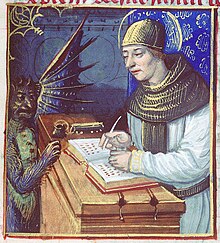
Back خطأ مطبعي Arabic غلط مطبعى ARZ Баҫма хатаһы Bashkir Překlep Czech Ăнсăрт пичетлев CV Tippfehler German Refûś EML Tajperaro Esperanto اشتباه تایپی Persian Kirjoitusvirhe Finnish

A typographical error (often shortened to typo), also called a misprint, is a mistake (such as a spelling or transposition error) made in the typing of printed or electronic material.[1] Historically, this referred to mistakes in manual typesetting. Technically, the term includes errors due to mechanical failure or slips of the hand or finger,[2] but excludes errors of ignorance, such as spelling errors, or changing and misuse of words such as "than" and "then". Before the arrival of printing, the copyist's mistake or scribal error was the equivalent for manuscripts. Most typos involve simple duplication, omission, transposition, or substitution of a small number of characters.
"Fat finger" typing (especially in the financial sector) is a slang term referring to an unwanted secondary action when typing. When a finger is bigger than the touch zone, with touchscreens or keyboards, there can be inaccuracy and one may hit two keys in a single keystroke. An example is buckled instead of bucked, due to the "L" key being next to the "K" key on the QWERTY keyboard, the most common keyboard for Latin-script alphabets.
- ^ "Typo - Definition". Free Merriam-Webster Dictionary. Merriam-Webster. Archived from the original on 2013-07-19. Retrieved 2012-01-03.
- ^ "Wordnet definition". Wordnet. Princeton University. Archived from the original on 2016-03-04. Retrieved 2007-11-12.